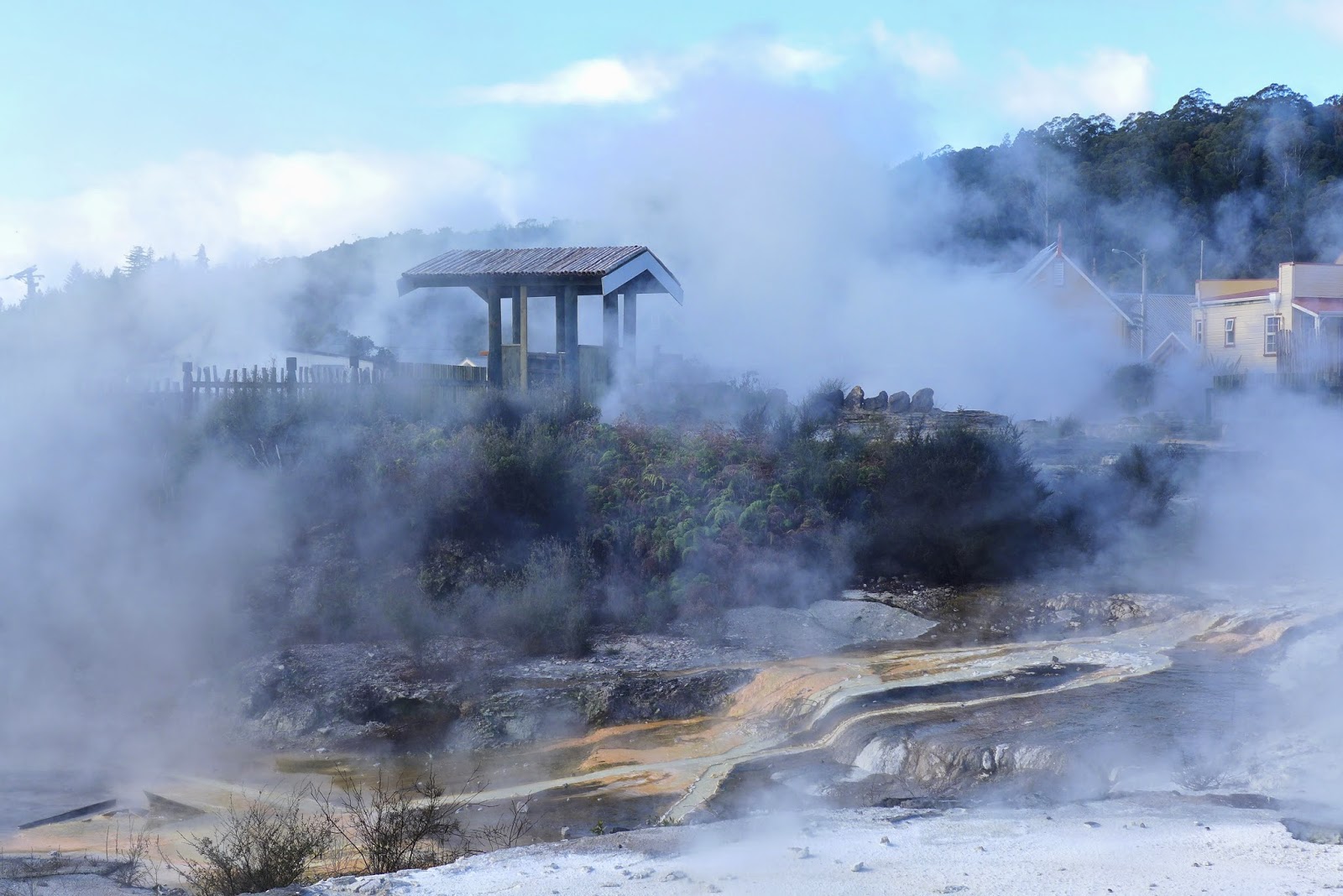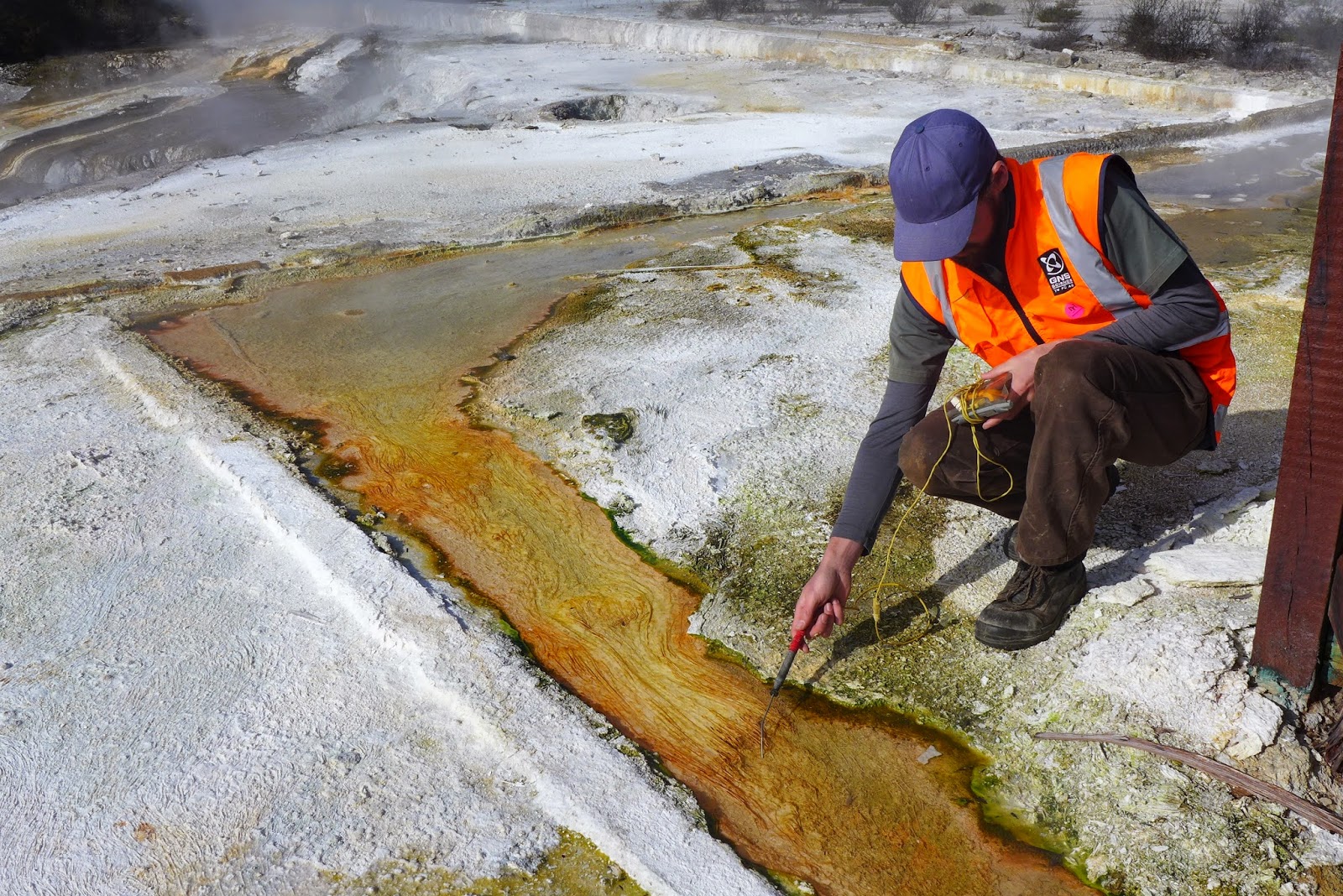GNS Science and Waikato University are investigating one thousand of the geothermal hot springs in New Zealand’s North Island.
The goal of this ambitious 1000 Springs Research Project is to understand and compare the microbiology of these springs along with their physical and chemical make-up. That adds up to a lot of sampling trips, processing of data and investigation of the findings!
This video gives an overview of the different types of Geothermal Springs in the area:
The GeoTrips website www.geotrips.org.nz includes lots of geothermal areas that you can visit such as this one at Waiotapu: www.geotrips.org.nz/trip.html?id=50
Some of these hot springs are scummy looking puddles like this one, that don’t seem to have much to say about themselves apart from the obvious message to stay clear and avoid being swallowed up by scalding mud.
 |
| Bruce Mountain/ GNS Science |
Others are of course very spectacular and beautiful iconic tourist attractions such as the Champagne Pool at Waiotapu…
A few days ago I joined some of the GNS Science team; Jean Power, Dave Evans and Matt Stott, (who leads the project) on a sampling trip to Whakarewarewa village in Rotorua,
The village is an extraordinary place, where a community has learnt to live in close relationship to an ever changing geothermal environment.
Home heating, hot water, cooking and bathing is provided by the hot springs, although there are interesting downsides, such as occasional ground collapses and holes appearing next to houses
Safety first! Investigating hot springs is a potentially hazardous activity. Sometimes well known and well trodden areas have suddenly caved in because the ground gets eroded from below. Scientists use various safety techniques as well as a strong sense of caution when approaching the springs.
Dave Evans uses a long pole to reach into a hot pool to get a water sample, while Jean adds information to a tablet with an application that allows all the data to be quickly uploaded to the 1000 Springs database website.
Several water samples are taken, and the team measures the temperature, pH, conductivity, turbidity, dissolved oxygen and the redox potential of each spring, as well as taking photographs and other metadata.
Geothermal ecosystems are globally rare and little is known about the unique populations of microorganisms (Bacteria and Archaea) that inhabit these environments or the ecological conditions that support them. Here Dave is carefully labellling the sample bottles.
Samples are filtered and prepared for analysis after returning to the lab. To identify all the different species, the DNA in the sample is extracted and analysed, and the chemical content of the water and the dissolved gases is measured.
Extremophiles are microorganisms that thrive in harsh environmental conditions – where temperatures can be as high as 122˚C, the pH can range from highly acidic to strongly alkaline, and there are elevated concentrations of salts and/or heavy metals.
Different microbes are responsible for the spectacular colours seen in hot springs. The colour zonation relates directly to particular temperature ranges which the resident species have tolerance for.
There are thought to be more than 15000 geothermal features in New Zealand, and each of them will have a distinct microbial community and often include many undiscovered species
The selected springs span the known pH ranges (pH 0-9) and temperature ranges (20°C-99°C) or have unusual geochemical or geophysical profiles. Sites with high cultural or conservation value are also included.
All this new knowledge will allow New Zealand to assess the conservation, cultural, recreational and resource development value of the microbes in geothermal ecosystems, and enable further future microbial ecology research and discovery.
| Photo by Matt Stott / GNS Science |
My role in these field trips is to visually document the scientific process and communicate about the research to all who are interested. Scientists are invariably passionate and enthusiastic about their work, and are keen for others to find out about what they do.
Here is our video of the 1000 Springs team in action:












